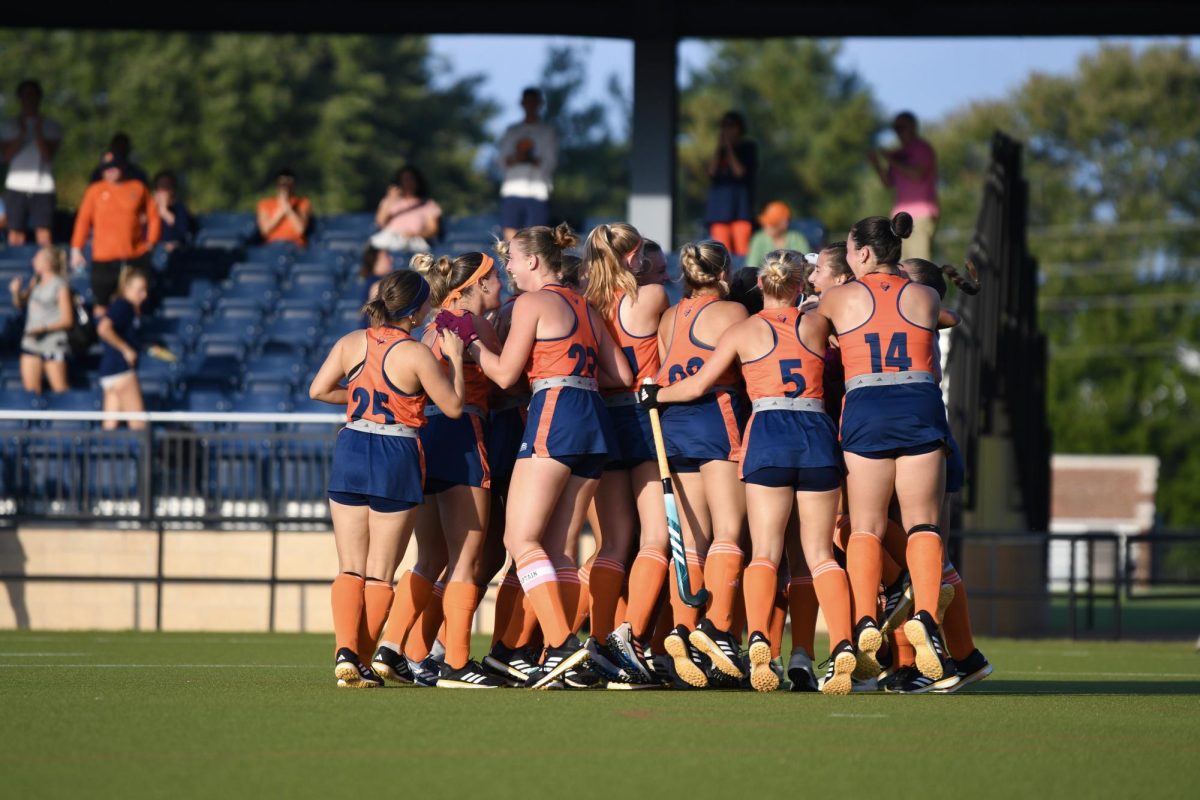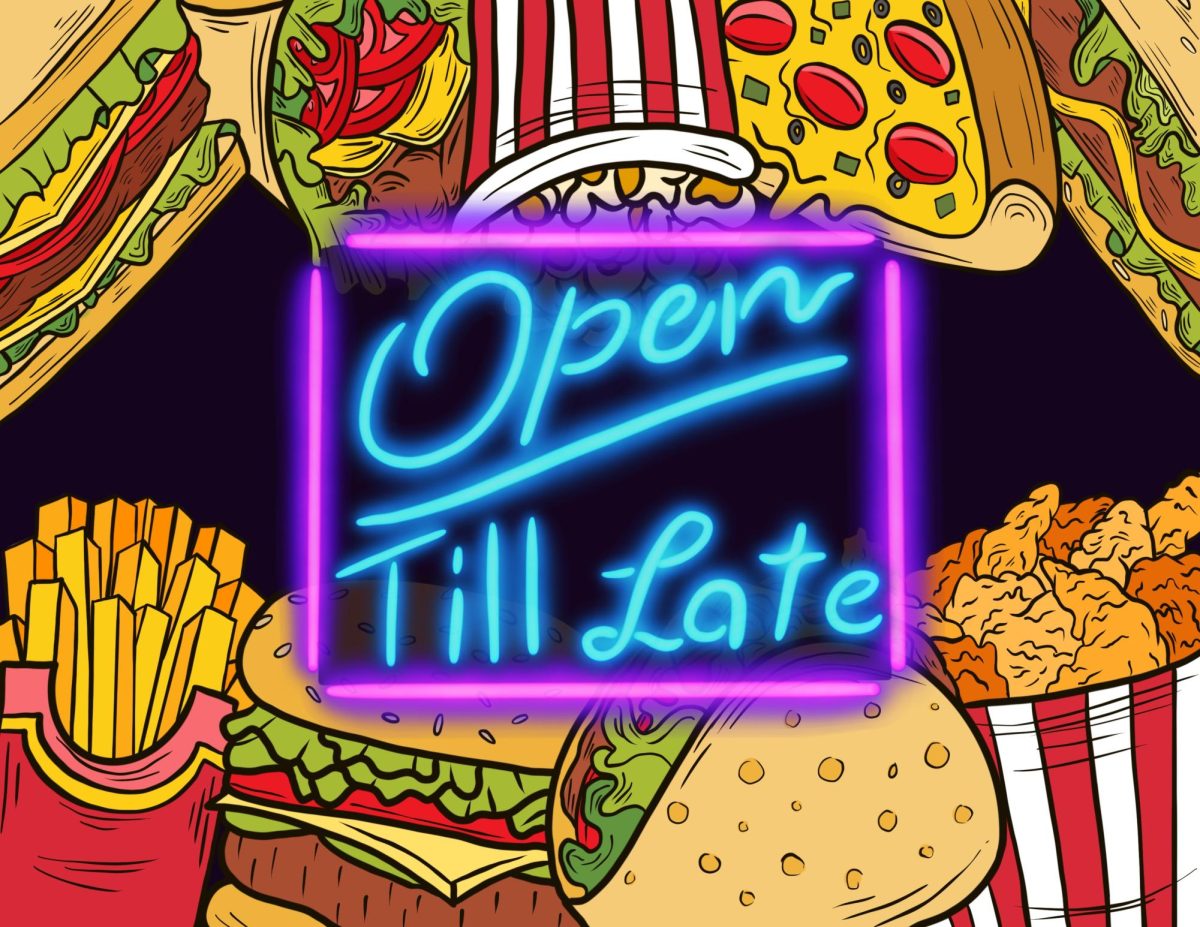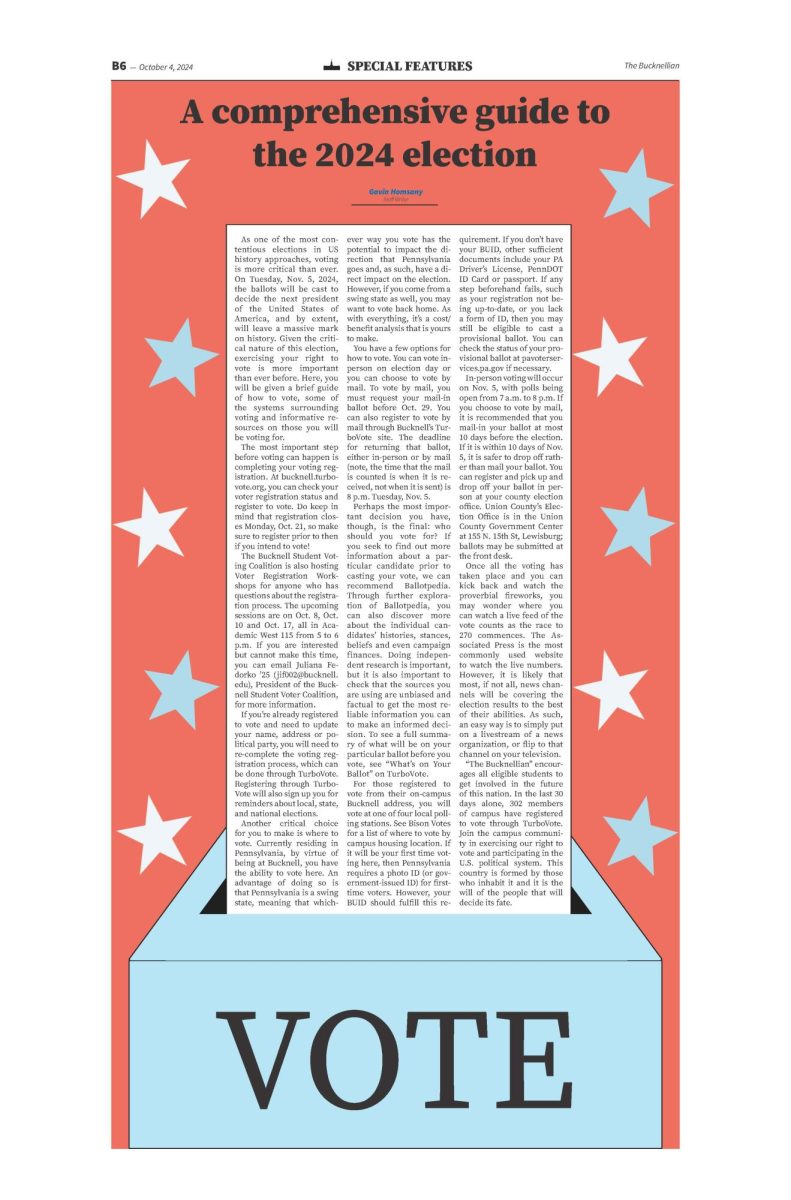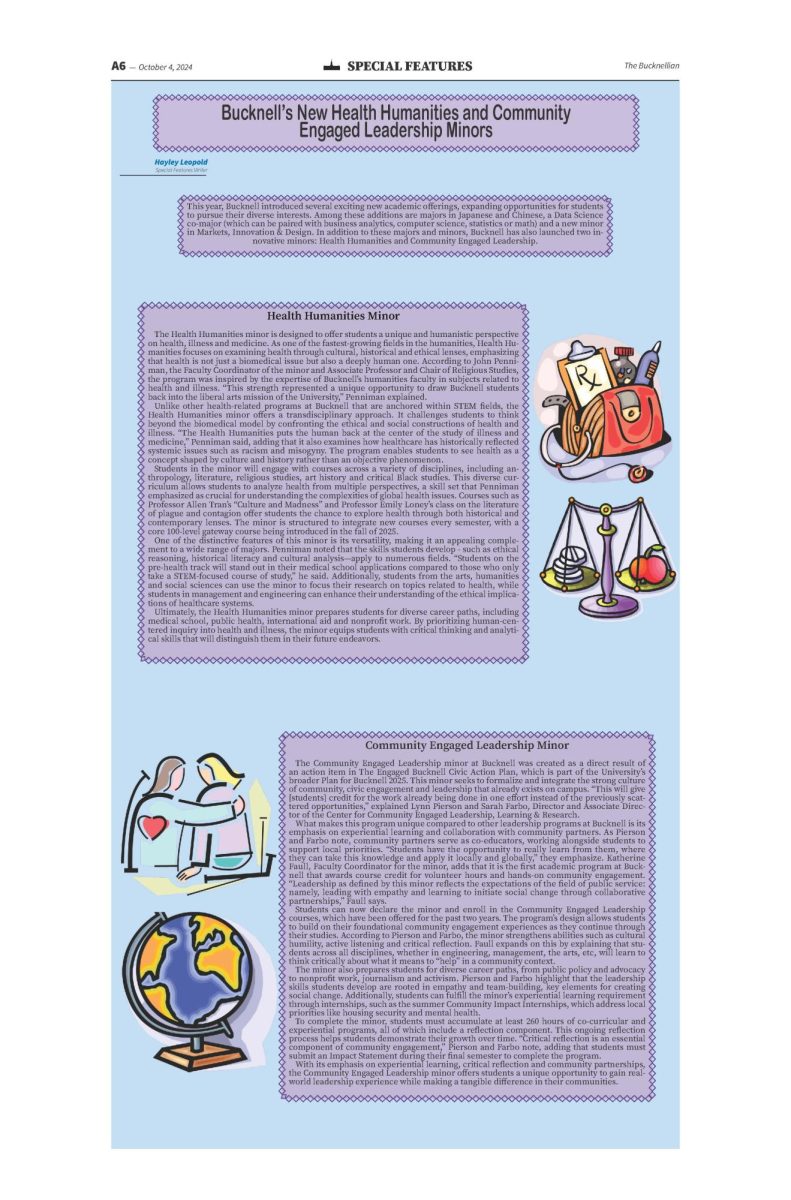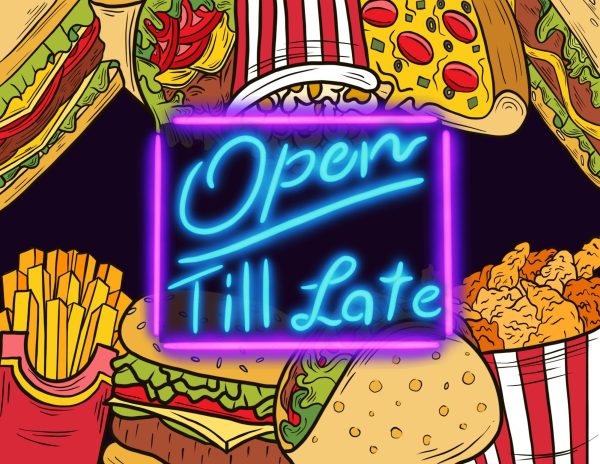We need Groundhog’s Day
February 10, 2023
Have you ever wondered why we look to a groundhog in early February to tell us the weather in the months ahead? Last Thursday, all eyes were on Punxsutawney Phil’s shadow as he revealed six more weeks of winter. I even heard that some Bucknellians made the two-and-a-half hour trek to the infamous Gobbler’s Knob to see Phil in action. Why do we celebrate Phil? Should we?
It is first important to outline the origins of Groundhog’s Day, which CNN neatly outlines. The earliest form of the day dates back to the “pre-Christian era of Western Europe” where Celtics commonly divided the year into four sections, with one of these sections beginning on February 1. As Christianity came to dominate in Europe, Christians adopted the day as “Candlemas” where they would bless candles in hopes of a warm winter. CNN reports that the centrality of agriculture to everyday life made weather predictions imperative. Later on, German influence led to the badger becoming associated with weather-predicting capabilities on Candlemas, and the holiday was formed more or less into what we know today. When the Pennsylvania Dutch traveled overseas, they adjusted the holiday from badgers to groundhogs, given that groundhogs were more populous in the region. CNN dates the first official Groundhog’s Day by Punxsutawney locals back to 1887.
Reflecting on holidays overall, Groundhog’s Day tends to be easily forgotten and discredited. But I think this perspective lends itself to a lack of knowledge surrounding its origins. From CNN’s timeline, it is evident that the day holds within it ties to a variety of different cultures and ways of thinking or living. It acts as a reminder of the centuries-old theories and understandings about the natural processes around us like weather that still inform the way we live today.
And the importance of weather predictions seem just as pressing today as they did for agrarian societies during the early years of Candlemas. Climate change has forced attention towards changes to seasons and other weather-related processes.
The only aspect of the holiday that I question is the accuracy of Phil’s insights and other groundhogs alike. Punxsutawney Phil’s accuracy rate falls between 30 and 40 percent, meaning that he is wrong more than he is right. While I cannot argue with critics of the holiday who cannot get past a groundhog’s inaccuracies, I would ask whether the accuracy is what is significant about this holiday.
NPR notes that the holiday’s popularity skyrocketed as industrialization began to expand, as people tried to resist the “massive societal and technological changes” that were occurring at the time. Groundhog’s Day is not so much about purposefully predicting the weather as it is about connecting to nature and the Earth in a way that many of us forget to do on any day other than February 2.
Ultimately, we need Groundhog’s Day. We need Punxsutawney Phil and Staten Island Chuck and any other groundhogs who tried to find their shadow last Thursday. They connect us to nature and to old ways of thinking that may hold new meaning for a world that is drastically different from the world they were created in.






